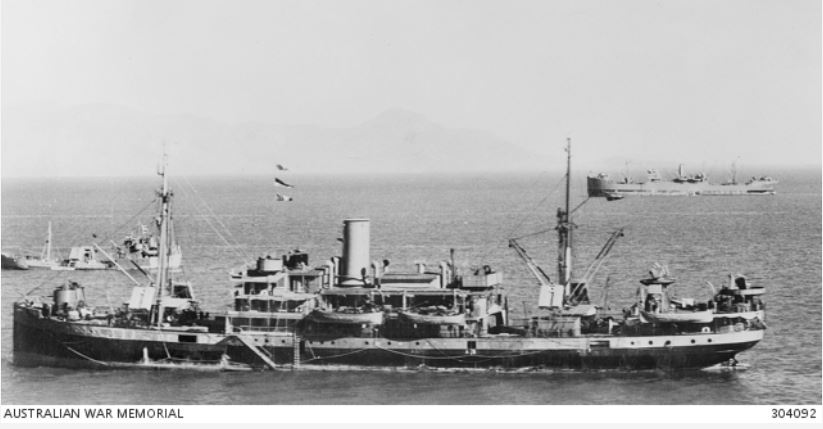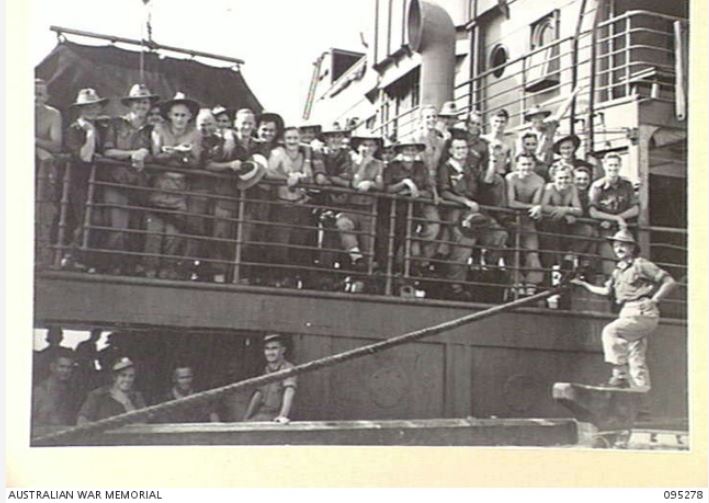SS Van Outhoorn
From Our Contribution
Remarks
In February 1942 the SS Van Outhoorn was escorted into the Indian Ocean by the HMAS Goulburn when it escaped from Batavia in the Dutch East Indies. Managed by the US Army she was given the designation X-54. She took part in 'Operation Lilliput' in northern New Guinea between December 1942 and June 1943 when with other, mainly Dutch small cargo ships she transported men and equipment between Milne Bay and Oro Bay. On 14 Apr 1943 188 Japanese aircraft attacked Milne Bay, and the Van Outhoorn was damaged by near misses from high level Japanese bombers. Armed with a 12 Pounder AA gun aft and 20mm Oerlikon AA guns above the Bridge and in the bow, she also in the photo appears to have a tower aft (covered) where there appears to be an AA rocket launcher. Later during the war she operated between New Guinea ports and Townsville/Cairns. She was manned by Dutch officers and Indonesian crew.
This description of the transport of a US Army party gives a view of what it was like to travel aboard her:
The Commanding Officer and his other staff officers departed from Sydney by air about August 15th to be in a position to coordinate future movements in New Guinea. The remainder of the officers and men of 23rd Port Headquarters embarked on the ship "Van Outhoorn" on the evening of August 19 and departed from Sydney at 7:00 A.M. the morning of August 20th. The ship was small and crowded, and the accommodations for the men were bad. They were crowded, quartered in the "tween decks" on mattresses on the floor. The ceiling was not much over six feet high, there was poor lighting and little ventilation. The average floor space per man was 18 square feet. As the ship progressed north the weather became hot to the point where it was almost impossible for the men to remain below decks. The aroma of the native crew plus 600 crated animals on the aft deck added to their discomfort. Two ships joined the "Van Outhoorn" outside of Newcastle the afternoon of August the 20th. A brief pause outside Brisbane August 23rd to join a 16 ship convoy was the only stop until the "Van Outhoorn" took on coal at Bowen on August 26th. This left things on the ship covered with coal dust, which took two days to remove. The personnel were allowed to go ashore at Bowen in groups under supervision of the officers. The voyage was resumed late on August 27th and the ship arrived in Townsville the next day. ....The "Van Outhoorn" departed from Townsville in the next convoy for New Guinea. Later the convoy divided, part going to Port Moresby and the rest to Milne Bay. After a brief pause to pick up charts and maps outside the harbor at Milne Bay on September 8th, the vessel proceeded to Oro Bay.[1]

